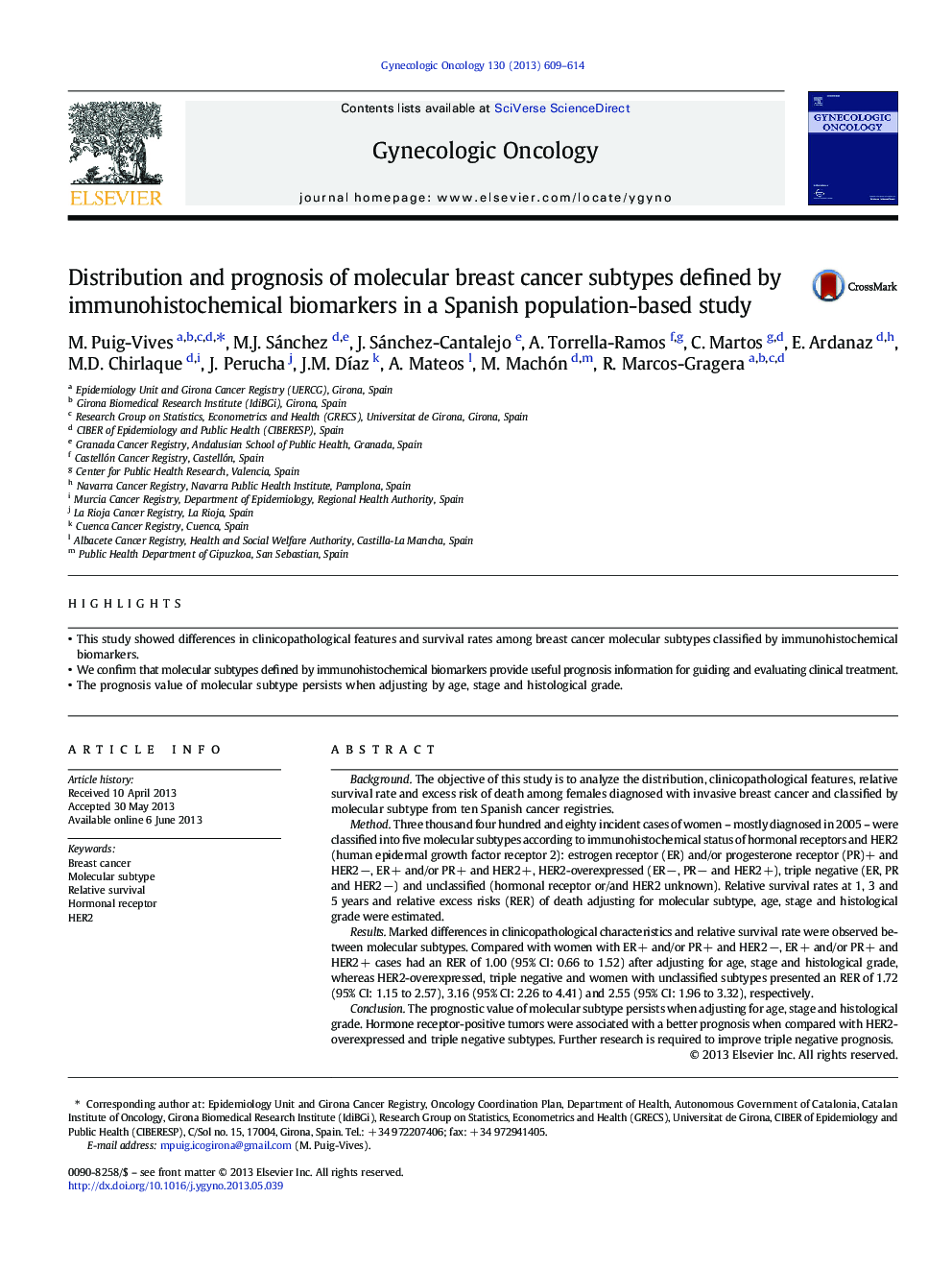| Article ID | Journal | Published Year | Pages | File Type |
|---|---|---|---|---|
| 6184542 | Gynecologic Oncology | 2013 | 6 Pages |
â¢This study showed differences in clinicopathological features and survival rates among breast cancer molecular subtypes classified by immunohistochemical biomarkers.â¢We confirm that molecular subtypes defined by immunohistochemical biomarkers provide useful prognosis information for guiding and evaluating clinical treatment.â¢The prognosis value of molecular subtype persists when adjusting by age, stage and histological grade.
BackgroundThe objective of this study is to analyze the distribution, clinicopathological features, relative survival rate and excess risk of death among females diagnosed with invasive breast cancer and classified by molecular subtype from ten Spanish cancer registries.MethodThree thousand four hundred and eighty incident cases of women - mostly diagnosed in 2005 - were classified into five molecular subtypes according to immunohistochemical status of hormonal receptors and HER2 (human epidermal growth factor receptor 2): estrogen receptor (ER) and/or progesterone receptor (PR)+ and HER2Â â, ERÂ + and/or PRÂ + and HER2Â +, HER2-overexpressed (ERÂ â, PRÂ â and HER2Â +), triple negative (ER, PR and HER2Â â) and unclassified (hormonal receptor or/and HER2 unknown). Relative survival rates at 1, 3 and 5Â years and relative excess risks (RER) of death adjusting for molecular subtype, age, stage and histological grade were estimated.ResultsMarked differences in clinicopathological characteristics and relative survival rate were observed between molecular subtypes. Compared with women with ERÂ + and/or PRÂ + and HER2Â â, ERÂ + and/or PRÂ + and HER2Â + cases had an RER of 1.00 (95% CI: 0.66 to 1.52) after adjusting for age, stage and histological grade, whereas HER2-overexpressed, triple negative and women with unclassified subtypes presented an RER of 1.72 (95% CI: 1.15 to 2.57), 3.16 (95% CI: 2.26 to 4.41) and 2.55 (95% CI: 1.96 to 3.32), respectively.ConclusionThe prognostic value of molecular subtype persists when adjusting for age, stage and histological grade. Hormone receptor-positive tumors were associated with a better prognosis when compared with HER2-overexpressed and triple negative subtypes. Further research is required to improve triple negative prognosis.
